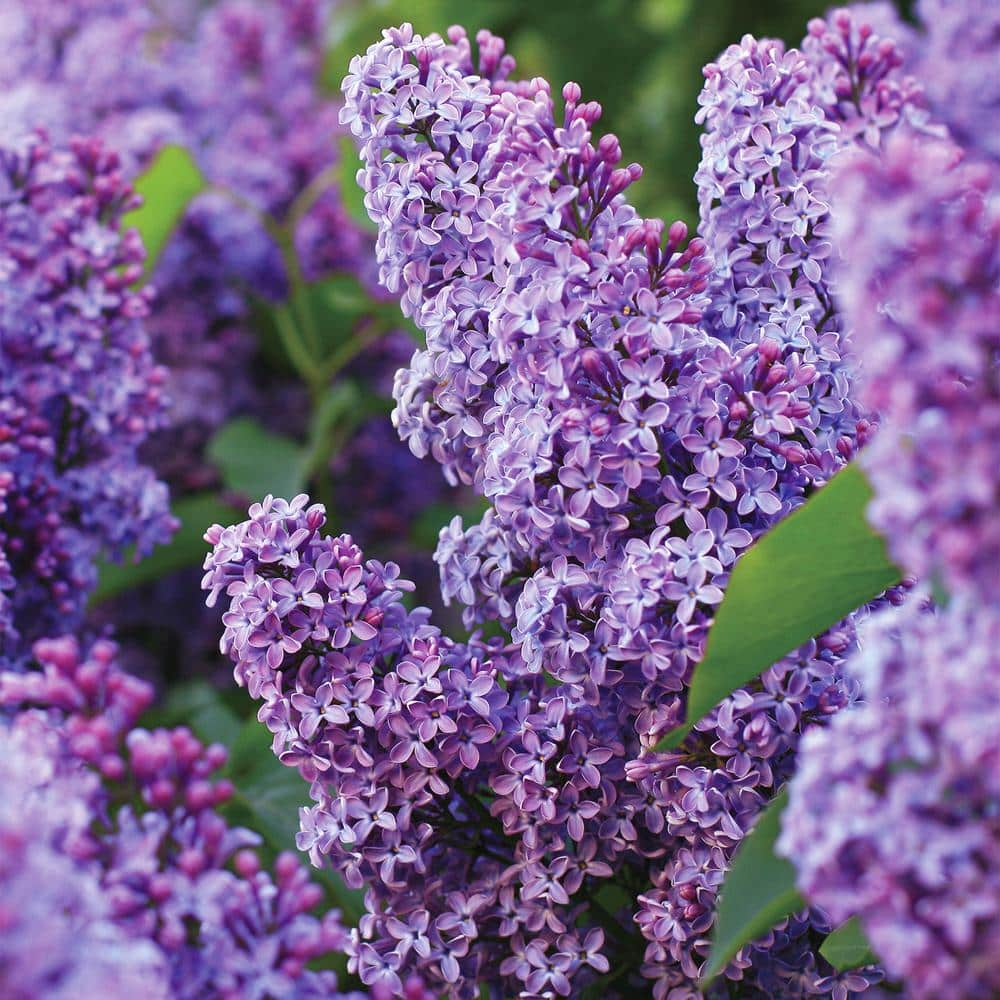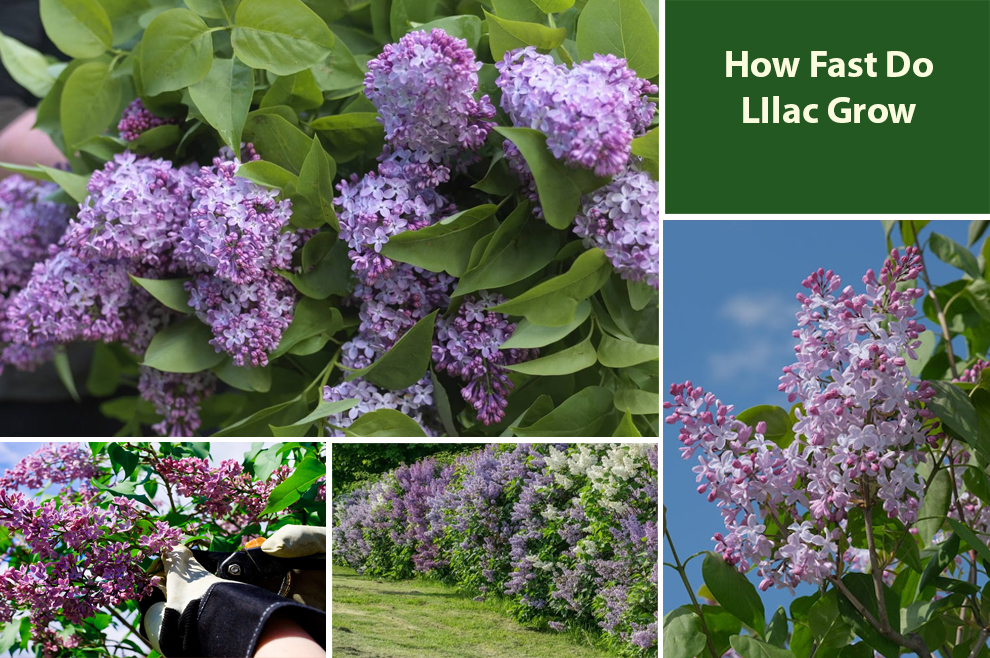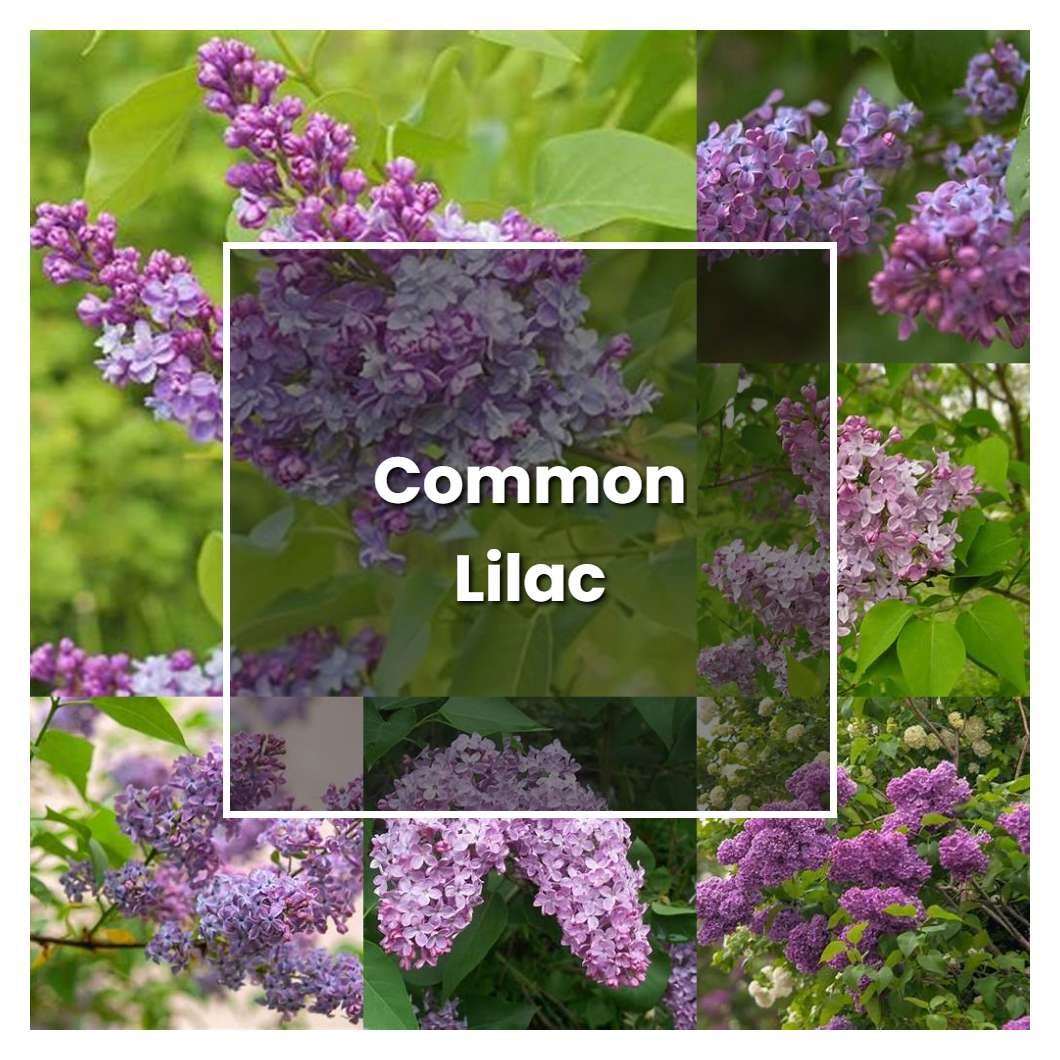What Affects the Growth Rate of Common Purple Lilacs?
The growth rate of common purple lilacs is influenced by a combination of factors, including climate, soil quality, sunlight, and watering habits. Climate plays a significant role in determining the growth rate of lilacs, as they thrive in temperate regions with moderate temperatures and adequate moisture. In areas with extreme temperatures, lilacs may experience stunted growth or become more susceptible to disease.
Soil quality is another crucial factor affecting the growth rate of common purple lilacs. Lilacs prefer well-draining soil with a pH between 6.5 and 7.5. Soil with poor drainage or inadequate nutrients can lead to slow growth, while soil with optimal conditions can promote healthy growth and development.
Sunlight is also essential for the growth of common purple lilacs. Lilacs require full sun to partial shade, with a minimum of six hours of direct sunlight per day. Inadequate sunlight can result in weak and spindly growth, while sufficient sunlight promotes robust growth and flowering.
Watering habits also impact the growth rate of common purple lilacs. Lilacs require consistent moisture, especially during the first year after planting. However, overwatering can be detrimental, leading to root rot and other problems. Proper watering techniques, such as watering deeply but infrequently, can help promote healthy growth and development.
Understanding the factors that affect the growth rate of common purple lilacs is essential for gardeners and landscapers. By providing optimal conditions, including climate, soil quality, sunlight, and watering habits, lilacs can thrive and reach their full potential. This knowledge can help gardeners anticipate and address potential growth issues, ensuring the long-term health and beauty of their lilac plants.
How to Create an Ideal Environment for Your Lilac to Thrive
Creating an ideal environment for your common purple lilac is crucial for promoting healthy growth and maximizing its growth potential. One of the most important factors to consider is soil preparation. Lilacs prefer well-draining soil with a pH between 6.5 and 7.5. To achieve this, gardeners can add organic matter such as compost or manure to the soil to improve its structure and fertility.
Pruning is another essential aspect of creating an ideal environment for common purple lilacs. Pruning helps to promote healthy growth, encourages blooming, and removes dead or diseased branches. The best time to prune lilacs is in late winter or early spring, before new growth begins. Gardeners should remove any dead or damaged branches, and cut back about one-third of the oldest stems to the ground.
Fertilization is also important for promoting healthy growth in common purple lilacs. Lilacs are heavy feeders and require regular fertilization to thrive. Gardeners can use a balanced fertilizer in the early growing season, following the manufacturer’s instructions for application rates. It’s also important to avoid over-fertilizing, as this can damage the plant and lead to weak growth.
In addition to soil preparation, pruning, and fertilization, gardeners should also consider the importance of proper watering and sunlight. Lilacs require consistent moisture, especially during the first year after planting. However, overwatering can be detrimental, leading to root rot and other problems. Gardeners should water their lilacs deeply but infrequently, allowing the soil to dry out slightly between waterings.
By creating an ideal environment for your common purple lilac, you can promote healthy growth and maximize its growth potential. This includes providing optimal soil conditions, pruning regularly, fertilizing properly, and ensuring adequate watering and sunlight. By following these tips, gardeners can help their lilacs thrive and enjoy their beautiful blooms for years to come.
Understanding the Life Cycle of Common Purple Lilacs
The life cycle of common purple lilacs is a complex process that spans several years. From planting to maturity, lilacs go through distinct stages of growth and development. Understanding these stages is crucial for gardeners and landscapers to anticipate and address potential growth issues, ultimately promoting healthy growth and maximizing the common purple lilac growth rate.
The first stage of growth is the germination phase, which typically occurs within 1-3 weeks after planting. During this stage, the seedling develops its root system and grows its first set of leaves. It is essential to provide adequate moisture and nutrients during this phase to ensure proper establishment.
As the seedling grows, it enters the sapling stage, characterized by rapid growth and development. This stage can last anywhere from 1-3 years, depending on factors such as climate, soil quality, and sunlight. During this phase, the lilac begins to produce its first flowers, which are often smaller and less fragrant than those produced by mature plants.
Once the lilac reaches maturity, it enters the adult stage, where it continues to grow and produce flowers. This stage can last for several decades, with some lilacs living up to 50 years or more. Regular pruning and fertilization are essential during this phase to maintain the plant’s health and promote optimal growth.
As lilacs age, they may enter a decline phase, where growth slows, and flower production decreases. This is a natural part of the life cycle, but it can be accelerated by factors such as disease, pests, or environmental stress. Proper care and maintenance can help extend the life of the lilac and promote healthy growth.
Understanding the life cycle of common purple lilacs is essential for gardeners and landscapers to provide optimal care and maintenance. By recognizing the different stages of growth and development, individuals can anticipate and address potential growth issues, ultimately promoting healthy growth and maximizing the common purple lilac growth rate.
Factors That Can Impact Lilac Growth Rate: A Closer Look
While climate, soil quality, sunlight, and watering habits play a significant role in determining the common purple lilac growth rate, other factors can also impact the plant’s development. Temperature, humidity, and pest/disease management are critical factors that can affect the growth rate of common purple lilacs.
Temperature is a crucial factor in lilac growth, with optimal temperatures ranging from 65°F to 75°F (18°C to 24°C). Temperatures above 85°F (29°C) can lead to heat stress, causing the plant to become dormant and reducing its growth rate. Conversely, temperatures below 55°F (13°C) can slow down growth and increase the risk of disease.
Humidity is another essential factor, with lilacs preferring a relatively low humidity environment. High humidity can lead to fungal diseases, such as powdery mildew, which can significantly impact the plant’s growth rate. Maintaining a humidity level between 40% and 60% can help promote healthy growth.
Pest and disease management is also critical in maintaining a healthy lilac plant. Common pests, such as aphids, scales, and borers, can weaken the plant and reduce its growth rate. Regular monitoring and control measures, such as insecticidal soap and neem oil, can help prevent infestations. Fungal diseases, such as root rot and leaf spot, can also impact growth. Practicing good sanitation, removing infected plants, and using fungicides can help prevent the spread of disease.
In addition to these factors, soil pH and nutrient availability can also impact the common purple lilac growth rate. Lilacs prefer a slightly alkaline soil pH, ranging from 6.5 to 7.5. Soil nutrient deficiencies, particularly nitrogen and phosphorus, can limit growth. Regular soil testing and fertilization can help ensure optimal nutrient availability.
By understanding the impact of these factors on the common purple lilac growth rate, gardeners and landscapers can take proactive steps to mitigate any negative effects. By providing optimal growing conditions, managing pests and diseases, and maintaining good soil health, lilac plants can thrive and reach their full growth potential.
Comparing Growth Rates: Common Purple Lilac vs. Other Varieties
While common purple lilacs are a popular choice for gardens and landscapes, other lilac varieties can offer different growth rates and characteristics. Comparing the growth rates of common purple lilacs to other popular varieties can help gardeners and landscapers make informed decisions about which plants to use in their designs.
One popular alternative to common purple lilacs is the Miss Kim lilac (Syringa ‘Miss Kim’). This variety is known for its compact growth habit and slower growth rate, making it a good choice for smaller gardens or hedges. Miss Kim lilacs typically grow 6-8 feet tall and 4-6 feet wide, with a growth rate of 1-2 feet per year.
Another variety, the Bloomerang lilac (Syringa ‘Penda’), offers a more rapid growth rate than common purple lilacs. Bloomerang lilacs can grow 8-10 feet tall and 6-8 feet wide, with a growth rate of 2-3 feet per year. This variety is also known for its repeat-blooming habit, producing flowers in the spring and again in the summer.
In contrast, the common purple lilac (Syringa vulgaris) is a more vigorous grower, typically reaching 10-15 feet tall and 6-8 feet wide. Its growth rate is 2-4 feet per year, making it a good choice for larger gardens or landscapes.
Other factors to consider when comparing lilac varieties include bloom time, flower color, and fragrance. Common purple lilacs are known for their fragrant, purple flowers that bloom in late spring. Miss Kim lilacs produce pinkish-purple flowers, while Bloomerang lilacs produce purple flowers with a pinkish tint.
Understanding the growth rates and characteristics of different lilac varieties can help gardeners and landscapers choose the best plants for their specific needs. By selecting varieties that offer the desired growth rate, bloom time, and flower color, gardeners can create beautiful and thriving lilac gardens that provide years of enjoyment.
Maximizing Growth Potential: Tips for Pruning and Training
Pruning and training are essential techniques for maximizing the growth potential of common purple lilacs. By pruning and training your lilac plant, you can promote healthy growth, encourage blooming, and maintain a desired shape or size.
Pruning is a critical step in maintaining the health and growth of your lilac plant. Prune your lilac in late winter or early spring, removing any dead, diseased, or damaged branches. Cut back the tips of the branches to encourage new growth and promote blooming. Remove any suckers or water sprouts that grow from the base of the plant, as these can take energy away from the rest of the plant.
Training is also an important step in maximizing the growth potential of your lilac plant. Train your lilac to grow in a desired shape or size by providing support with stakes or trellises. For example, you can train your lilac to grow as a hedge or screen by planting multiple plants close together and pruning them regularly.
Here are some additional tips for pruning and training your lilac plant:
- Prune your lilac plant immediately after it finishes blooming, as this will help promote new growth and encourage blooming the following year.
- Use sharp, clean pruning tools to prevent spreading disease and to make clean cuts.
- Make cuts at a 45-degree angle, and just above a growth node (where a leaf meets the stem).
- Remove any weak or spindly growth, as this can take energy away from the rest of the plant.
- Train your lilac plant to grow in a desired shape or size by providing support with stakes or trellises.
By following these tips and techniques, you can maximize the growth potential of your common purple lilac plant and enjoy beautiful blooms for years to come.
Illustration: Pruning Techniques for Common Purple Lilacs

This illustration shows the proper pruning techniques for common purple lilacs, including making cuts at a 45-degree angle and just above a growth node.
Common Mistakes to Avoid When Growing Lilacs
While common purple lilacs are relatively easy to grow, there are several common mistakes that gardeners make that can impact the plant’s growth rate and overall health. By avoiding these mistakes, gardeners can ensure that their lilac plants thrive and reach their full potential.
One of the most common mistakes gardeners make when growing lilacs is over-watering. Lilacs prefer well-draining soil and can be susceptible to root rot if the soil is too wet. To avoid this, make sure to plant your lilac in a location with good drainage and avoid watering too frequently.
Another mistake gardeners make is under-fertilizing. Lilacs are heavy feeders and require regular fertilization to promote healthy growth. Use a balanced fertilizer in the spring and again in the summer to provide your lilac with the nutrients it needs.
Pruning is also an important aspect of lilac care, and many gardeners make the mistake of pruning too much or too little. Prune your lilac in late winter or early spring, removing any dead or damaged branches. Cut back the tips of the branches to encourage new growth and promote blooming.
Finally, many gardeners make the mistake of not providing enough sunlight for their lilac plants. Lilacs prefer full sun to partial shade, so make sure to plant your lilac in a location that receives at least 6 hours of direct sunlight per day.
By avoiding these common mistakes, gardeners can ensure that their lilac plants thrive and reach their full potential. Remember to provide your lilac with well-draining soil, regular fertilization, proper pruning, and plenty of sunlight to promote healthy growth and maximize the common purple lilac growth rate.
Additional Tips:
- Avoid planting lilacs in areas with standing water or where water tends to collect.
- Use a layer of mulch around the base of the plant to retain moisture and suppress weeds.
- Deadhead spent blooms to encourage more flowering and promote healthy growth.
- Divide and replant lilacs every 10-15 years to maintain their vigor and promote healthy growth.
Conclusion: Unlocking the Full Potential of Your Common Purple Lilac
Common purple lilacs are a beautiful and fragrant addition to any garden or landscape. By understanding the factors that affect their growth rate, creating an ideal environment, and avoiding common mistakes, gardeners can unlock the full potential of their lilac plants.
Throughout this article, we have discussed the various factors that influence the growth rate of common purple lilacs, including climate, soil quality, sunlight, and watering habits. We have also provided tips and advice on how to create an optimal environment for lilacs to grow, including suggestions for soil preparation, pruning, and fertilization.
Additionally, we have examined specific factors that can affect the growth rate of common purple lilacs, such as temperature, humidity, and pest/disease management. We have also compared the growth rates of common purple lilacs to other popular lilac varieties, highlighting any notable differences or similarities.
By applying the tips and advice provided in this article, gardeners can maximize the growth potential of their common purple lilacs and enjoy beautiful blooms for years to come. Remember to provide your lilac with well-draining soil, regular fertilization, proper pruning, and plenty of sunlight to promote healthy growth and maximize the common purple lilac growth rate.
In conclusion, understanding the growth patterns and needs of common purple lilacs is essential for unlocking their full potential. By following the tips and advice provided in this article, gardeners can create a thriving and beautiful lilac garden that will provide years of enjoyment.
With proper care and attention, common purple lilacs can grow and thrive, providing a stunning display of color and fragrance in the garden. Whether you are a seasoned gardener or just starting out, we hope that this article has provided you with the knowledge and inspiration you need to unlock the full potential of your common purple lilac.






/common-lilac-growing-tips-3269207_01-7b923125278942eabc0b56debfa3ff74.jpg)

